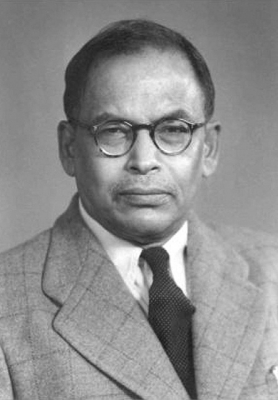
Meghnad Saha was an Indian astrophysicist, who proposed the Saha ionization equation by relating the temperature of stars to their spectrum. The equation seeded the foundation for many advancements in astrophysics and astrochemistry.Meghnad Saha was born near Dhaka, in the former Bengal Presidency of British India in 1893. Coming from a humble background, he worked very hard to attend school and colleges. He did odd jobs to support his stay and education. Saha joined the Presidency college. where he was taught by renowned scientists, including Prafulla Chandra Ray and Jagadish Chandra Bose. He did MSc in Applied
Mathematics in 1915 from Calcutta University. The next year, he became a lecturer in the Calcutta University College of Science.
In 1919, Saha received the Premchand Roychand Scholarship for his dissertation on the Harvard Classification of Stellar Spectra. He carried out his research in Europe. In 1920, Saha successfully formulated the thermal ionisation theory and the Saha ionization equation. His thesis on “Origin of Lines in Stellar Spectra’ won him the Griffith Prize of the Calcutta Universit Saha equation links the composition and appearance of the star spectrum with the temperature of the light source and can thus be used to determine either the temperature of the star or the relative abundance of the chemical elements investigated. The thermal ionization equation was later perfected by the British astrophysicist Edward A. Milne. The equation has remained fundamental in all work on stellar atmospheres.
Saha joined the University of Allahabad in 1923 and worked there for the next 15 years. At the university, Saha wrote his famous book ‘A Treatise on Heat. In 1939, he became a professor and Dean of the Faculty of Science at the University of Calcutta and remained there until his death in 1956.
Saha invented an instrument to measure the weight and pressure of solar rays and started the journal ‘Science and Culture. He also worked on other topics like stellar spectra, thermal ionization, selective radiation pressure, spectroscopy, molecular dissociation, propagation of radio waves in the ionosphere, solar corona, solar radio emission, beta radioactivity, and the age of the rocks.
He won in the 1952 general election as an independent candidate from North-West Calcutta constituency. It was due to Saha’s effort as an MP that the Saka Calendar or the Indian national calendar was adopted in 1956. He is also credited for drawing up the original plan of the Damodar Valley Project.
Picture Credit : Google



